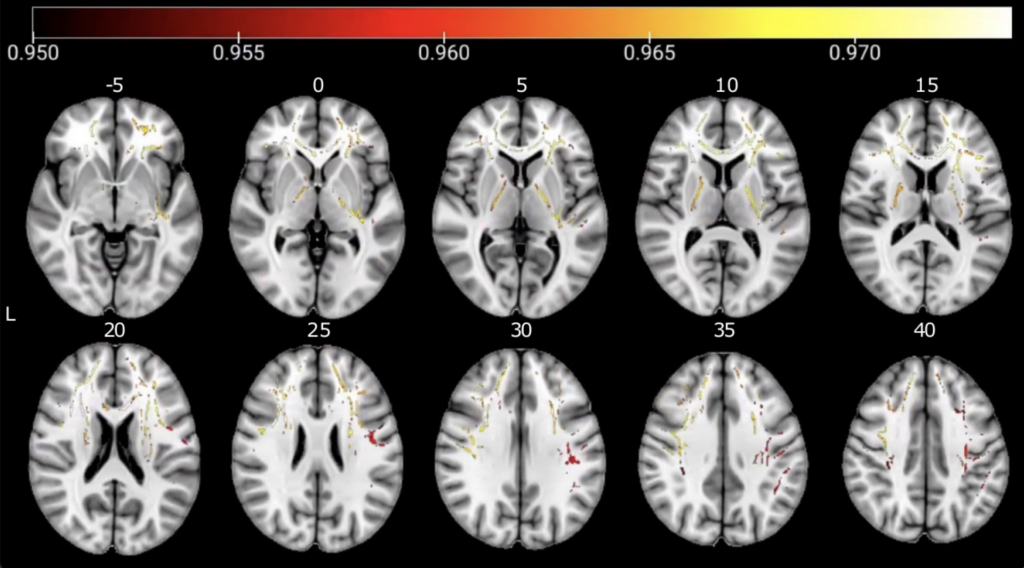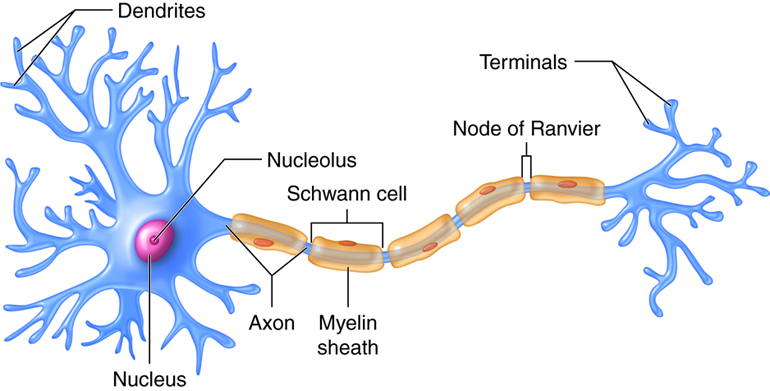
Researchers at Colorado State University have identified myelin, the insulating layer around nerves in the human brain, as a key predictor of memory performance. Published in May in the journal Neurobiology of Aging, a study led by Associate Professor Aga Burzynska of the Department of Human Development and Family Studies is one of the first to provide empirical evidence demonstrating how myelin content is associated with cognitive performance in living humans.
“Our findings suggest that myelin plays a crucial role in maintaining cognitive function throughout life,” Burzynska said. “Protecting myelin integrity could become a new target for interventions aimed at slowing down or preventing cognitive decline and diseases like Alzheimer’s.”
Measuring cognitive decline
The research, conducted in collaboration with physicists from the Kansas Medical School and the University of Seoul in South Korea, used advanced magnetic resonance imaging techniques and comprehensive cognitive assessments to explore the role of myelin in brain function. More than 140 healthy individuals, aged 20 to 80, participated in the study, which analyzed their cognitive performance alongside innovative brain imaging data.
“For decades, theories have suggested that the deterioration of white matter, where myelin is found, contributes to cognitive decline, particularly in aging and Alzheimer’s disease. However, empirical proof in living humans has been lacking. Our study bridges this gap by providing evidence that links lower myelin content to poorer memory performance,” Burzynska said.
The study was motivated by the “structural disconnection” hypothesis of brain aging. This theory, which originated from animal models and examinations of cadaver brains, lacked validation in healthy human participants. The hypothesis suggests that as the myelinated axons in the brain’s white matter break down, different brain regions and networks become disconnected, leading to cognitive dysfunction.
While previous imaging techniques could detect general age-related alterations within the brain’s white matter microstructure, researchers were unable to isolate myelin as the specific component that was changing. This new imaging method allows researchers to pinpoint myelin content with greater precision.
Myelin in mid-life
A key finding of the study is that myelin content peaks in the 40s and 50s and begins to decline thereafter. The study also found that lower myelin content in prefrontal white matter, a region critical for higher cognitive functions, correlates with poorer memory performance. The prefrontal cortex, which matures around the age of 25, is particularly susceptible to declines in function as a person ages. The development of both the prefrontal cortex and myelination are among the most recent evolutionary developments in the human brain.
To identify myelin-cognition associations, participants in the study were asked to complete a series of tests that assessed various cognitive functions, such as memory, processing speed, and executive function. By relating these cognitive measures to myelin content, the researchers found a strong link between greater myelin content and better cognitive performance, independent of age, sex, and educational levels of participants.
In a separate study of animal models of Alzheimer’s disease, changes in myelin were shown to precede the development of amyloid plaques, which are the hallmark of Alzheimer’s disease. This, paired with Burzynska’s latest study, positions myelin deterioration as a potential early warning sign of cognitive dysfunction.

Metabolic health
Burzynska and colleagues are already planning future studies to track myelin and cognitive performance in individuals over several years to further understand the role of myelin in cognitive aging.
Additionally, the research highlights the importance of metabolic health in maintaining myelin integrity. Another recent study from Burzynska’s BRAiN Lab indicates that individuals with better metabolic health and lower visceral adiposity (abdominal fat) tend to have higher myelin content. This correlation is already prompting research into lifestyle interventions that could preserve myelin and cognitive function.
“If we could understand what developmental and lifestyle factors lead to peak myelination in early life, adolescence, and adulthood into the 40s – then we could help people raise their myelin levels so that, in a way, they have more to lose, and symptoms of cognitive decline could be delayed,” Burzynska said.
For now, Burzynska’s recommendations echo the longstanding advice of the medical community: engage in regular exercise and maintain a balanced diet and healthy body composition to preserve physical and cognitive health.
Looking ahead, The BRAiN Lab aims to identify changes in white matter and related metabolic health factors that could help prevent cognitive decline and Alzheimer’s disease before symptoms appear.
This study was funded by the National Institutes of Health and the Alzheimer’s Association. Aga Burzynska is an associate professor in the Department of Human Development and Family Studiers and the Molecular, Cellular, and Integrative Neurosciences program and an affiliate faculty member of CSU’s Columbine Health Systems Center for Healthy Aging. The Department of Human Development and Family Studies is part of CSU’s College of Health and Human Sciences.

